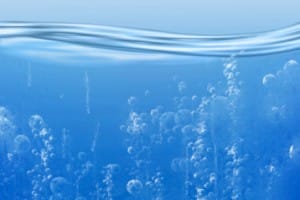The RIVM National Institute for Public Health and the Environment, together with the water boards throughout the Netherlands, is now examining the sewage water for the presence of the new corona virus. In total, this involves more than 300 measuring points at sewage treatment plants throughout the Netherlands. For example, the sewage water of all more than 17 million people in the Netherlands is examined for coronavirus particles. In recent weeks, the amount of particles in some regions has increased. In other regions this does not seem to be the case.
The results of the sewage investigation are now on the renewed corona dashboard of the national government to find. This data is updated weekly. Sewage research has expanded considerably in a short space of time. From 29 measuring points in April to 80 in July. And now all more than 300 locations are surveyed weekly.
Current results
In August, an increase was visible in the national picture of the corona virus in sewage water compared to the previous period. This concerns numbers of virus particles per milliliter of sewage water. At the moment we see differences per region. No coronavirus particles are seen in sewage at most locations. At other locations, an increase has been seen in recent weeks, such as in Amsterdam, Almere and The Hague. In the past week there were two outliers in Leiden-Noord and Woerden.
Once a week, researchers test sewage collected over 24 hours. The test results show how many virus particles are in the sewage water. The virus is not detectable in the stool in all people who have COVID-19. Some people infected with the new coronavirus have more virus particles in their stools than others. It does not matter whether someone has many, few or no complaints (yet) of an infection with the new corona virus.
Differences per region and per moment
The amount of virus particles in the sewage water can differ per region and per moment. This is because the number of people who secrete the new corona virus is always different. . Also, the sewage water entering the treatment plants that is measured does not only come from households. It is often mixed with company wastewater. In addition, rainwater causes dilution of household waste water. RIVM National Institute for Public Health and the Environment is working on a method to provide insight into these differences in order to better compare the measurement data from regions.
Source: RIVM
–


